Thankyou for taking our quiz, if you scored full marks well done, if you didn’t we can help explain in a little more depth.
Question 1)
Name three situations where you may overtake on the left.
When the vehicle in front is signalling to turn right.
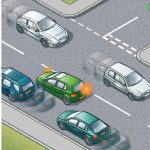
When the vehicle in front is turning right, it is perfectly fine to pass them on the left, in fact it keeps traffic moving.
When approaching a motorway slip road where you will be turning off
No you should not undertake on a motorway, you should be in the left lane to exit.
When you are in a one-way street
If you think about the word one way street then you will know nobody can come the other way so it it is fine to pass on left and right.
When a slower vehicle is travelling in the right-hand lane of a dual carriageway
Now look at the wording here, a slower vehicle is the the right hand lane, now you might be driving a sports car and the vehicle in the right hand lane is an old van, this does not give you the right to undertake ( passing on left)
In slow-moving traffic queues when traffic in the right-hand lane is moving more slowly
Highway Code
Rule 268
Do not overtake on the left or move to a lane on your left to overtake. In congested conditions, where adjacent lanes of traffic are moving at similar speeds, traffic in left-hand lanes may sometimes be moving faster than traffic to the right. In these conditions you may keep up with the traffic in your lane even if this means passing traffic in the lane to your right. Do not weave in and out of lanes to overtake.
Question 2)
A cycle lane is marked by a solid white line. You must not drive or park in it:
At any time
You may have ticked this box and to be honest it could be correct but there is a more suitable answer.
During the rush hour
Again possible but the question never said anything about times.
When the vehicle in front is signalling to turn right
If you join the question and answer up it does not make sense. How would you know a vehicle is going to turn right if you are going to park your vehicle.
If a cyclist is using it
Same as last answer, how would you know a cyclist is going to use the road if you park your vehicle.
During its period of operation
Now this makes sense, the cycle lane has an operation time so we do not drive or park in it. The wording is a very big while people fail.
Question 3)
Unbalanced wheels on a car may cause:
Tyres and wheels are not identical so at higher speeds that difference can cause the steering to vibrate. The tyre fitter has a a machine that fixes this. Watch how they do it
Question 4)
What does this sign mean?
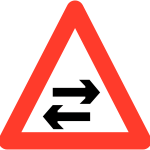
Its two way traffic crosses a one way road. You may get mixed up with the sign below with is two way traffic ahead.
Question 5)
What should you do when parking
your vehicles
facing downhill
When you are parking down hill it is a good idea to turn the front wheels to the right, this means if the handbrake fails the car will only roll back until the font wheels touches the kerb, maybe a couple of inches. if parking on a the downhill turn the wheels to the left.
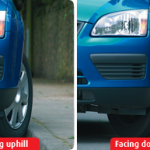
Question 6)
Your vehicle has a catalytic convertor
what does it do
You find a catalytic convertor within the exhaust, it reduces emissions. Watch this
Question 7)
How should you dispose
of a car battery.
These batteries can be toxic so must be taken to local authority or a local garage.
Question 8)
You are parked on a road at night when must you use parking light
In the highway code it tells us we must be parked facing the traffic ( on correct side of road) and if the speed is more than 30mph we must leave our parking side lights on.
Rule 249
All vehicles MUST display parking lights when parked on a road or a lay-by on a road with a speed limit greater than 30 mph (48 km/h).
Question 9)
At a pelican crossing
a flashing amber means?
If you think about a zebra crossing the belisha beacons it means that if there is nobody on the crossing it is fine to go, but if there are pedestrians on the crossing you wait, well the flashing on a pelican crossing means the same you can go if there are no pedestrians on the crossing.
Question 10)
What does this sign mean?
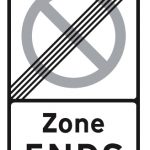
This means parking restrictions ends, many people get this sign confused with clearway which is below.
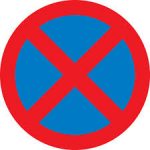
Question 11)
What does these signs mean?
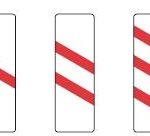
You will see these countdown markers on motorways dual carriageways and speed limit changes. The difference is the colour. Motorways blue and white dual carriageways black and white. A concealed railway crossing might be around a bend many times if a train is coming you may have a traffic queue, these signs are very useful on fast countries roads.
Question 12)
Where would you find reflective amber studs on a motorway?
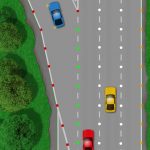
Traffic light colours are used on the road. Here is the meaning of each light
Red do not go, on a motorway they are found on the hard shoulder (do not cross unless of an emergency)
Amber do not go, these are found on hard shoulder (do not cross)
Green is go, these are found on slip roads so you can cross.
Question 13)
What’s the main cause of skidding?
Very simple here. If the car is faulty the driver should know, Road is slippery the driver should know, weather is bad the driver should know. So the answer is always the driver.
Question 14)
Mobility Class 3 vehicles which statement is true?
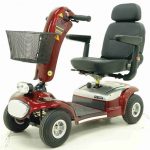
Above is a class 3 mobility vehicle, they are listed to 8mph and can go on dual carriageways but must have a flashing amber light.
Question 15)
What’s the aim of a smart motorway?
These motorways have variable speed limits so they can slow the traffic down that maybe a distance a way, this can ease congestion.
Question 16)
When driving a car with automatic transmission, what would you use kick down for?
When you overtake you may need more speed quickly, with a manual tranmission car you may drop down to a lower gear, in a automatic you can press the accelerator down hard and the car will drop down a gear and allow more speed.

